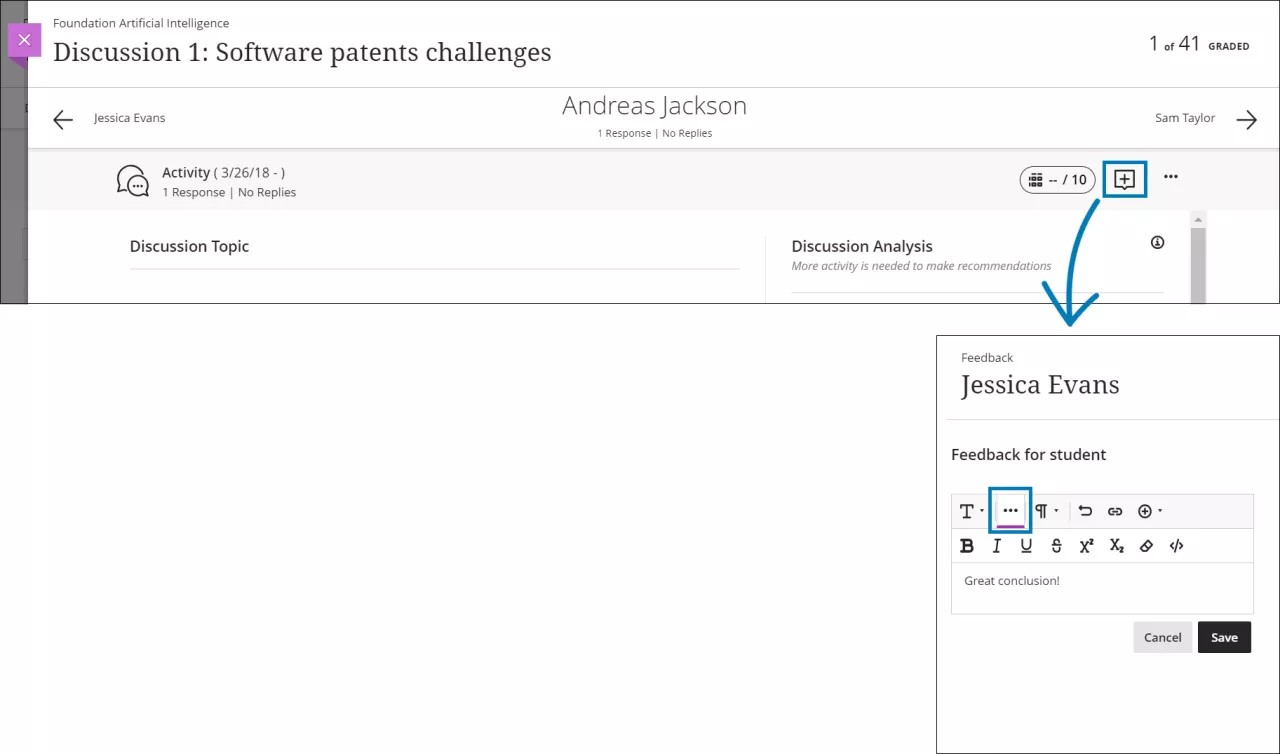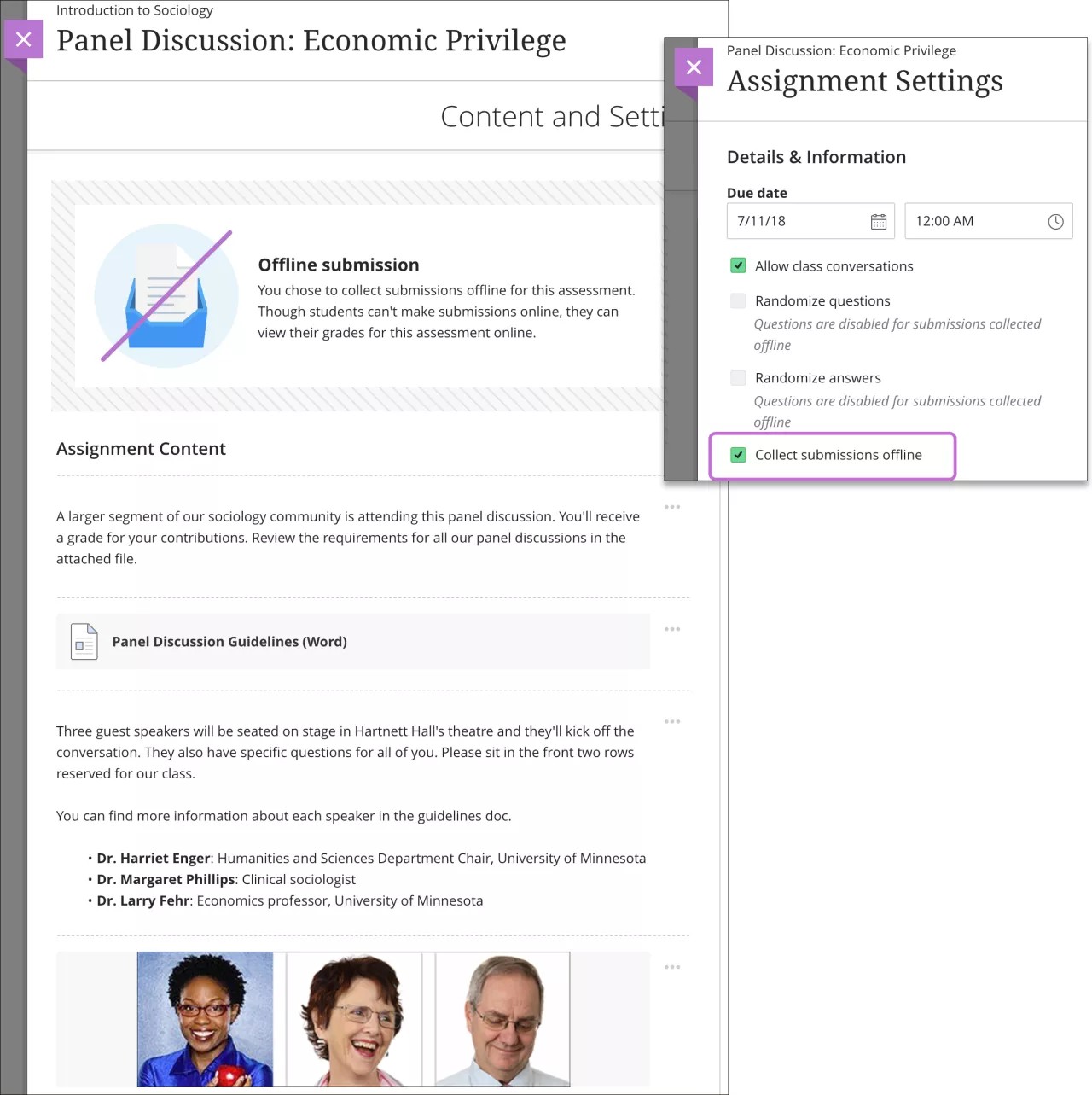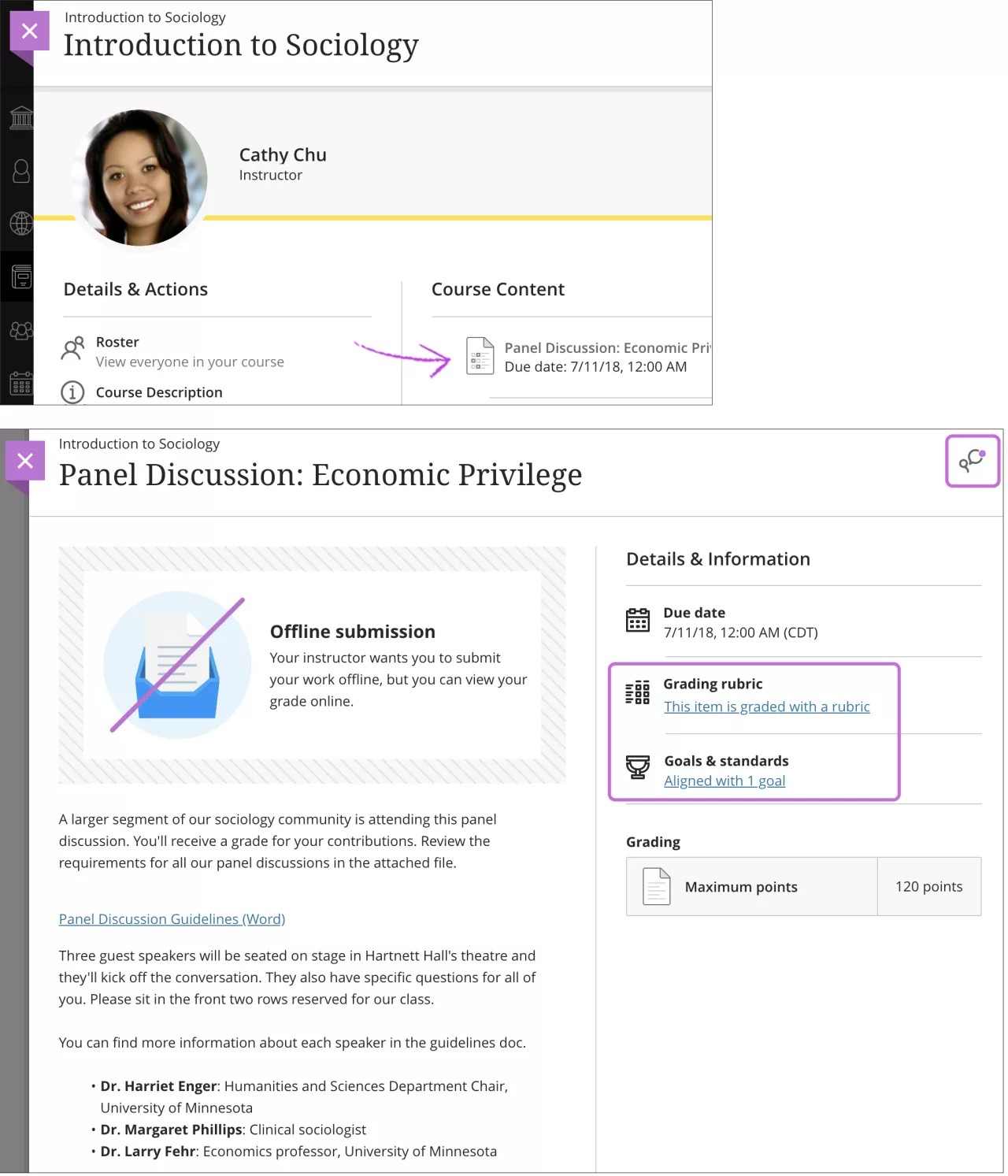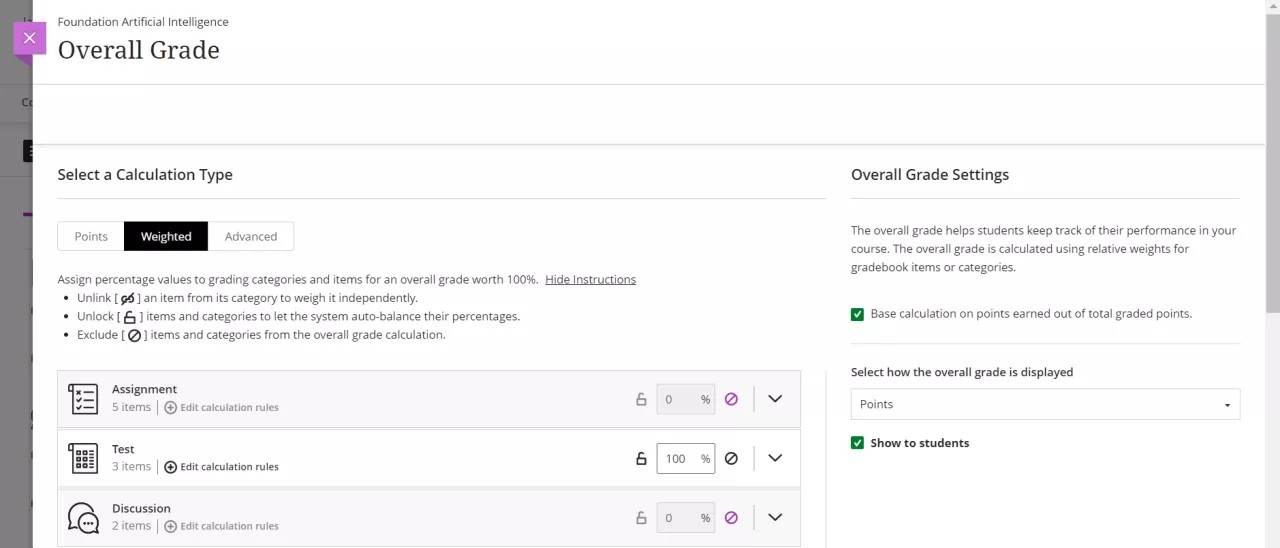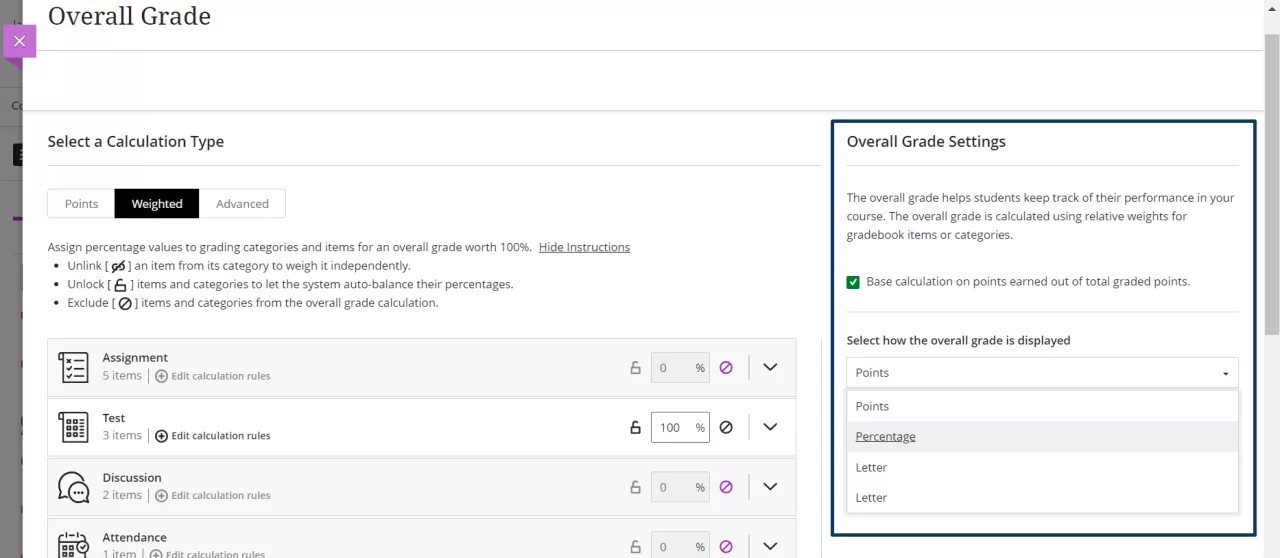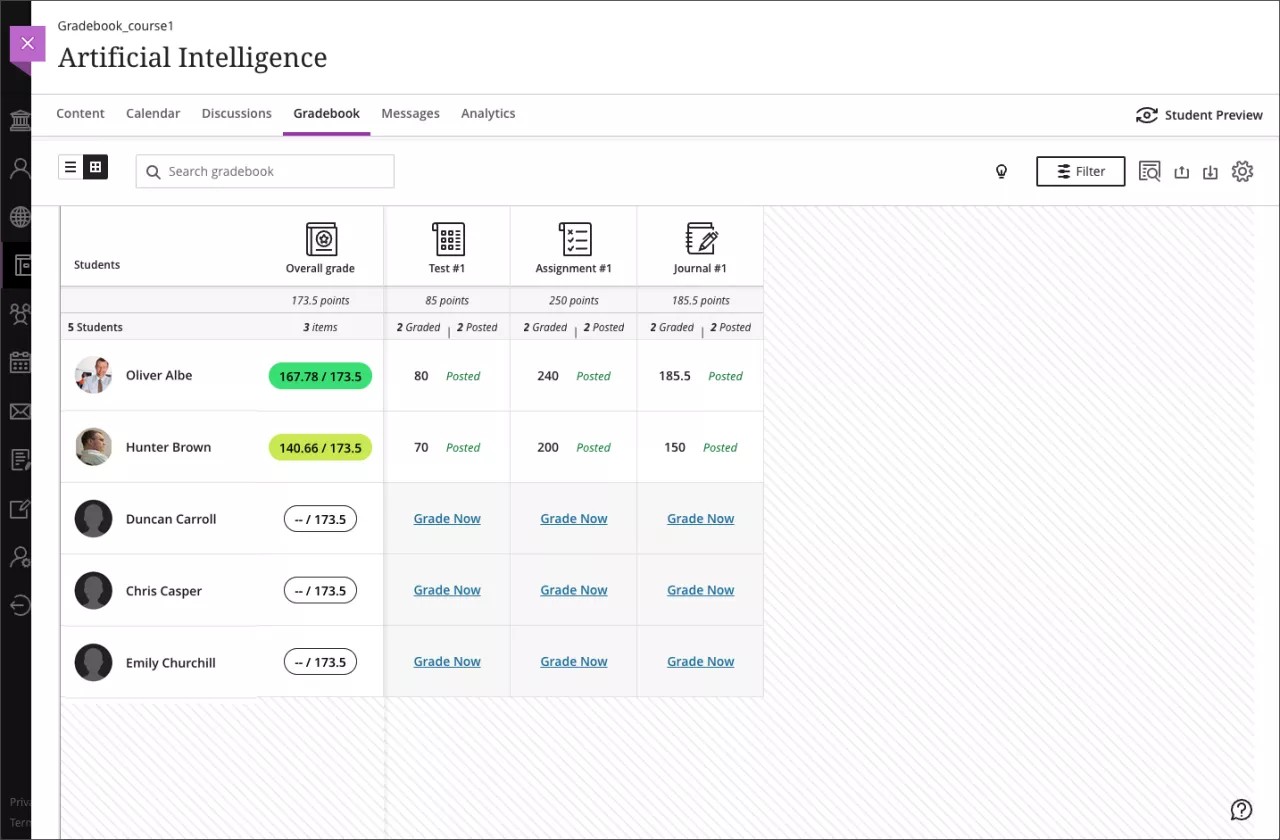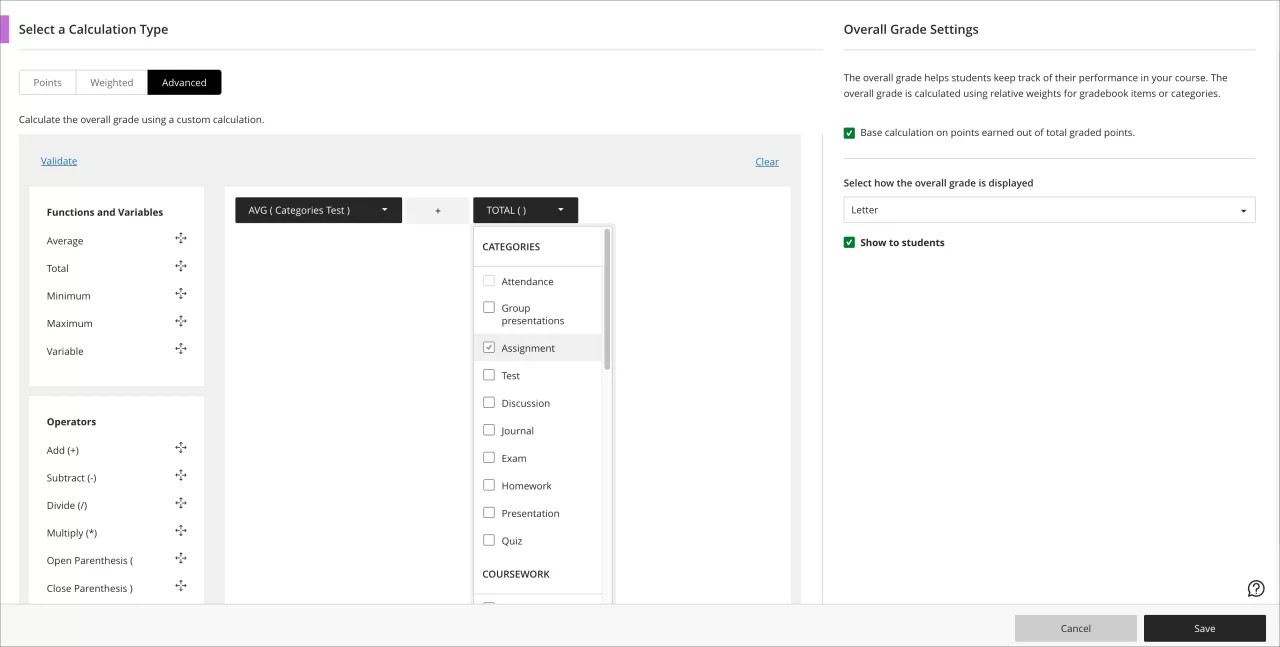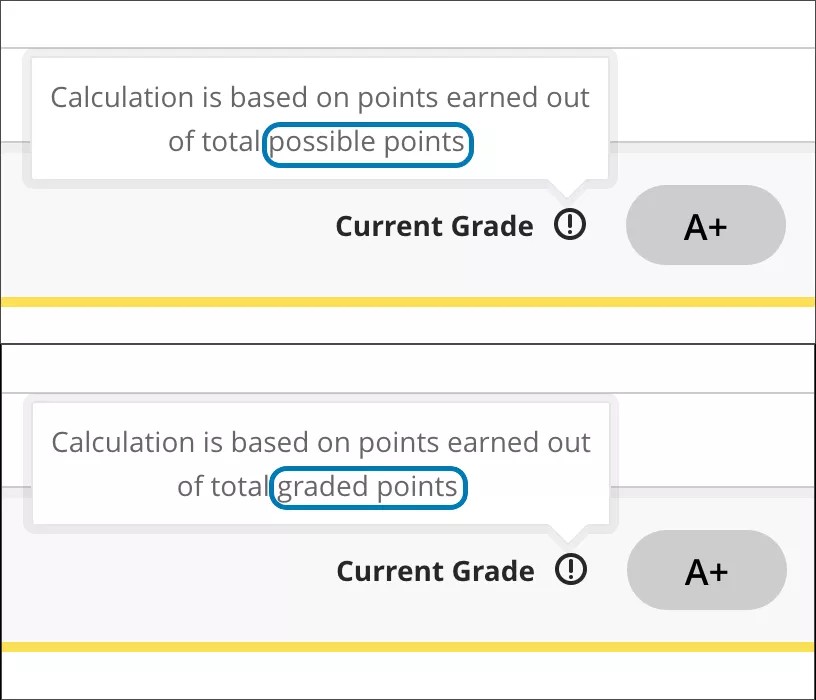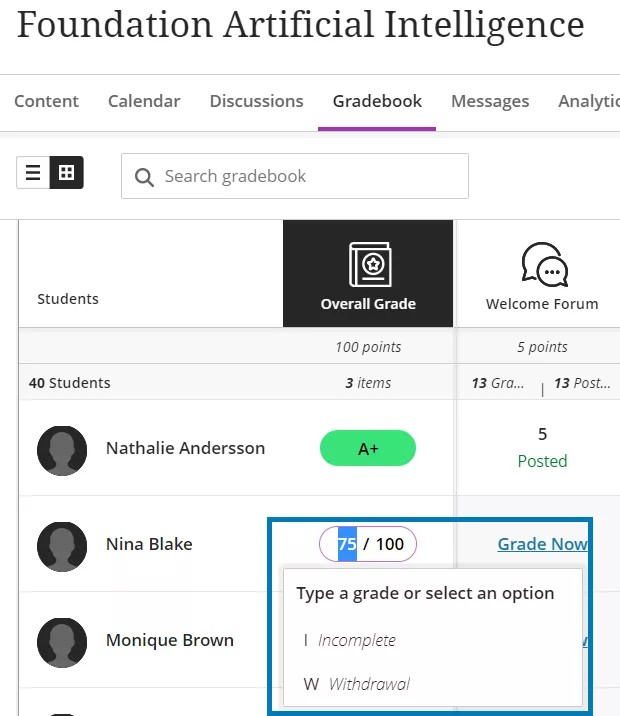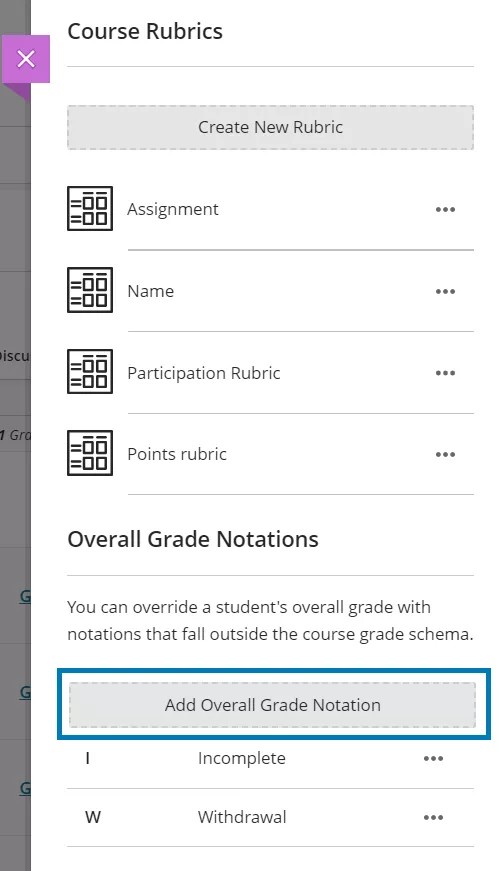Your institution controls which tools are available in the Original Course View. The gradebook is always available to instructors in the Ultra Course View.
Automatically created grade items
When you create a gradable item in your course, a gradebook item is created automatically. From the Gradable Items view, you can drag an item to a new location in the list.
If you open attendance from the Course Content page, you can add attendance to your gradebook. You can also add attendance on the main Gradebook page. Select the plus sign wherever you want the attendance row to appear in the list and select Add Attendance.
Manually added grade items
You can add grade items for activities that don't require submissions, such as an oral presentation, or a field trip. These items are also called manual columns or manually created items.
To manually add an item from the Grades view or Gradable items view of the gradebook:
- Select the plus button wherever you want to add an item and select Add Item.
- Add a title. It has a limit of 255 characters.
- Optionally, make the item visible to students.
- Provide the details such as a description and a grade unit. The due date is optional.
- Optionally, add the new item to a category.
There are no submissions for the manually added items, but you can assign them grades and provide feedback.
Manually added items don't appear on the Course Content page. The items do appear on students' global and course grade pages.
Provide grades and feedback for manually added items
Student feedback is a crucially important part of instruction. This feature is also available for manually added items.
- To add grades and feedback for a manually added grade item from the Gradable items view, select the item to open it.
- Select the Add Feedback option inline with the student you wish to give feedback to. This opens the feedback panel. The student name is visible at the top of the feedback panel and the corresponding row in the student list is highlighted.
- Select the text options icon to display the format options. You can also insert links and media files and provide voice and video feedback.
- Add your feedback and select Save.
- Optionally, you can also add a grade by selecting the grade pill. To make the grade and feedback available to the student, select the Post option from the menu next to the grade pill.
You can quickly navigate to other students using the Previous Student or Next Student navigation options at the bottom of the feedback panel.
To add feedback for a manually added grade item from the grid view, select the cell for the given student and item to open it. Select the View menu option to open the feedback panel. Add your feedback and select Save.
Collect submissions offline
Manually added items only appear in the gradebook and on students' global and course grade pages. Instead, you can create assessments that appear on the Course Content page but don't require students to upload submissions. You can add instructions, files, a rubric, and goals so students can prepare for the offline work. You can also enable conversations, but you can't add questions or grade anonymously.
Examples of offline work:
- Oral presentations
- Science fair projects
- Acting performances
- Artwork delivered in person
- Face-to-face team building exercises, panel discussions, and debates
Instructors who teach hybrid courses may find this type of assessment most useful. For example, you can use a rubric to grade an in-class presentation as a student presents. No need to take notes or add a score later.
When you create an assessment, you can choose to collect submissions offline. Students are informed they can't submit work online. If you create groups, students can view their group members.
For submissions collected offline, you can't allow multiple attempts, allow a time limit, or use SafeAssign.
More on grading offline submissions
You can add meetings to the attendance feature for grades that require students to be present outside of class. You may ask students to attend a field trip or guest speaker and then mark them present in attendance.
What do students see?
Students can view the assessment alongside other content on the Course Content page and on their global and course grades pages. Students are informed they can't submit work online. They can access other information, such as the instructions and a rubric if you added one. Students can participate in the assessment's conversations if enabled.
Overall grade
The overall grade is a calculated item displaying a running tally of all the items you grade and post that counts toward the overall course grade. You can set up the overall grade from any gradebook view.
If you don't have the overall grade configured yet, you'll see a banner prompting you to set it up. Select Set it up to create a gradebook column for the overall grade. On the page that appears, you can configure how the overall grade is calculated.
Don't want to use the overall grade? Select Hide this message to remove this prompt from your screen. If you change your mind, you can always add the overall grade via the Gradebook Settings.
If you already have an overall grade and want to edit it, select Settings to display the Gradebook Settings and then select Manage overall grade settings.
You can choose between three options for the Overall Grade Calculation:
- Points. A points-based grade calculation may aid transparency as it makes clear to students what’s worth more in a course and what’s worth less. You can select which categories and items you want to include in the calculation. The max total points available in the course will be decided by the items and categories you include in the calculation.
- Weighted. The weighted overall calculates grade items as a percentage of a final grade worth 100%. You can assign percentage values to any course items and categories you prefer. Note that any weighting applied to a category applies to the category as a whole. The items within the category will be proportionally weighted based on their underlying max points values. If you want the assessments within the category to be equally weighted, they need to have the same max points value.
- Advanced. Use a custom formula to calculate the overall grade.
Create and manage gradebook categories
Overall grade calculation: points and weighted
Categories containing items are listed first and ordered by the number of items contained.
Expand the category to see its items. From here you can:
- Unlink an item from its category. This is useful if you want to include the item in the calculation separately from the rest of the category.
- Unlock (for weighted option only) an item or category to edit its weighting. The calculation will automatically balance all unlocked items to ensure the overall calculation equals 100%.
- Exclude an item within a category from the overall grade calculation. This removes the item points from the total number of points available in the course. The item or category turns gray to indicate that it's not included in the calculation. Select the icon again to include the item or category in the calculation again.
Choose how you want the overall grade to display in Overall Grade Settings. You can display the overall grade as a letter grade, percentage, points or any grading schema created in the course. With the points display option, instructors and students see the overall grade as a fraction of the total points earned, divided by the total points available in the course. For example, 745/800.
Select Save when you're finished. The Overall grade column appears in the gradebook next to the student's names so you can quickly see how each student is performing.
You can introduce values with up to two decimal places.
Anonymously graded assessments aren't included in calculations until you turn off anonymity.
Overall grade calculation: advanced
This option gives you greater flexibility and supports varied evaluation practices. It is useful if you want to base the overall grade on a calculation involving one or more specific assessments.
Base calculation on points earned out of total graded points
As an instructor, you can decide to base a calculation on points earned out of the total graded points or out of the total possible points. The first option divides the points earned by the total graded points, while the second one calculates the overall grade as earned points divided by the total possible points.
From the Calculation Details page, select Base calculation on points earned out of total graded points. This option is available for any gradebook calculation, regardless of whether it contains operators with functions and variables.
To provide more clarity to your students, they can see the overall grade and calculation details from the information icon in their Gradebook. To set up this option, select “Show to students” under the overall grade settings.
Override the overall grade
You can adjust a student’s overall grade by adding an override.
To override a grade, select the grade cell in a student's Overall grade column and type in a new value. The overall grade pill for the student turns grey to indicate that an override has been added.
You can also override the overall grade with a grade notation. A grade notation is useful if a student can't complete the course or otherwise doesn't meet the requirements for completion. Grade notations can include Incomplete, Withdrawal, and so on. You can create and manage overall grade notations in your Gradebook Settings.
If you want to remove an override, select the student's overall grade cell and select Undo Override. The student's overall grade reverts back to the calculation you set up for your course.


